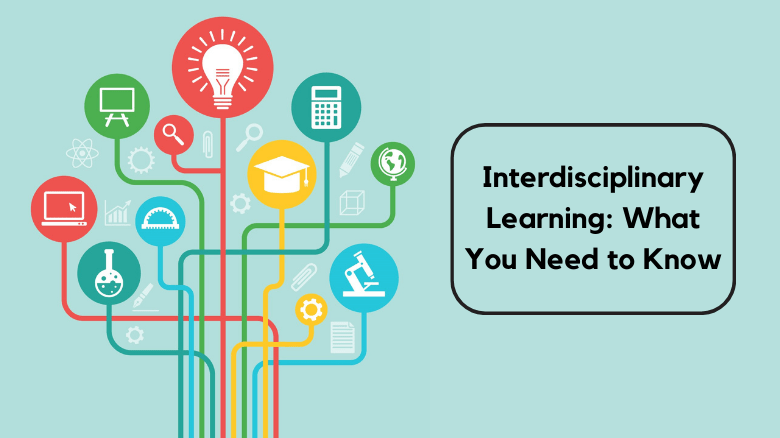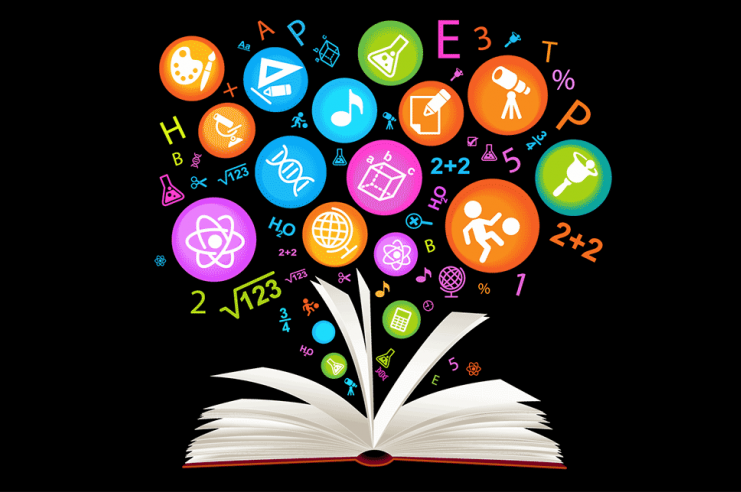In today’s fast-paced, knowledge-driven world, problems are rarely confined to a single field of study. Interdisciplinary learning—an approach that integrates multiple academic disciplines—allows students and professionals to develop a broader, more comprehensive understanding of complex topics.
From STEM fields incorporating ethics and philosophy to literature influencing psychology and history, interdisciplinary learning fosters critical thinking, creativity, and problem-solving. This article explores what interdisciplinary learning is, its benefits, real-world applications, and how to implement it effectively in education and beyond.
What is Interdisciplinary Learning?
1. Definition

Interdisciplinary learning involves integrating knowledge and skills from multiple academic disciplines to explore complex topics from different perspectives. Instead of studying subjects in isolation, students examine connections between disciplines to develop a more holistic understanding.
2. How It Differs from Multidisciplinary and Transdisciplinary Learning
- Multidisciplinary Learning: Subjects are taught separately but examined together for insights (e.g., a project combining biology and art but keeping them distinct).
- Interdisciplinary Learning: Subjects are blended, creating a new integrated perspective (e.g., bioethics combining biology, philosophy, and law).
- Transdisciplinary Learning: Extends beyond academic disciplines to real-world applications, often including community input and experiential learning.
💡 Example: In a climate change study, a multidisciplinary approach might examine scientific data alongside economic policies separately, while an interdisciplinary approach would integrate both to explore the broader societal impacts of climate policies.
Benefits of Interdisciplinary Learning
1. Enhances Critical Thinking & Problem-Solving
Interdisciplinary learning helps students analyze problems from multiple perspectives, improving their ability to evaluate evidence, identify biases, and develop creative solutions.
📌 Example: A business student studying environmental science can create sustainable business models, addressing both economic and ecological concerns.
2. Encourages Innovation & Creativity
By integrating diverse fields, interdisciplinary learning fuels new ideas and breakthroughs. Many scientific, artistic, and technological innovations stem from cross-disciplinary thinking.
📌 Example: The development of Artificial Intelligence (AI) involves computer science, neuroscience, ethics, and linguistics.
3. Prepares Students for the Modern Workforce
Today’s careers often require knowledge beyond a single discipline. Employers value workers who can adapt, synthesize knowledge, and think holistically.
📌 Example: A UX designer combines psychology (user behavior), technology (coding), and visual arts (graphic design) to create effective interfaces.
4. Improves Collaboration & Communication Skills
Interdisciplinary projects teach students to work in teams, articulate ideas across different fields, and appreciate diverse perspectives.
📌 Example: A healthcare team might include doctors, psychologists, engineers, and ethicists, each contributing different expertise to improve patient care.
Real-World Applications of Interdisciplinary Learning
1. Medicine & Healthcare
- Biomedical engineering blends medicine and technology to create life-saving devices like pacemakers.
- Psychiatry integrates neuroscience and psychology to treat mental health disorders holistically.
- Public health combines statistics, epidemiology, and sociology to develop disease prevention strategies.
2. Environmental Science & Sustainability
- Climate change research integrates ecology, economics, and political science to craft sustainable policies.
- Urban planning blends architecture, environmental studies, and sociology to design eco-friendly cities.
3. Technology & Artificial Intelligence
- AI development combines computer science, cognitive psychology, and ethics to create responsible AI.
- Human-Computer Interaction (HCI) merges psychology, engineering, and design to improve digital interfaces.
4. Arts, Humanities, & Social Sciences
- Literature and history together provide deeper insights into cultural evolution.
- Music therapy combines neuroscience, psychology, and music to aid emotional well-being.
- Political science integrates economics and sociology to analyze global conflicts and policies.
How to Implement Interdisciplinary Learning in Education
1. Project-Based Learning
Encouraging students to tackle real-world problems using multiple disciplines helps deepen engagement.
📌 Example: A project on ocean pollution could involve:
- Science (studying water chemistry and marine biology)
- Economics (examining the financial impact of pollution)
- Art (creating awareness campaigns through digital media)
2. Thematic Units
Teachers can design curricula around central themes that span multiple subjects.
📌 Example: “The Future of Energy”
- Physics (studying renewable energy sources)
- Economics (analyzing energy markets)
- Political Science (exploring energy policies and climate agreements)
3. Interdisciplinary Courses & Majors
Many universities offer interdisciplinary programs blending traditional subjects.
📌 Examples of Interdisciplinary Majors:
- Neuroscience (Biology + Psychology)
- Environmental Policy (Political Science + Environmental Science)
- Digital Humanities (Technology + Literature)
4. Collaborative Teaching
Having teachers from different disciplines co-teach courses enhances learning by providing multiple perspectives.
📌 Example: A literature professor and a history professor co-teaching “Revolutionary Movements in History and Literature.”
5. Encouraging Cross-Disciplinary Thinking in Students
- Assign essays that require students to incorporate multiple perspectives.
- Create interdisciplinary clubs (e.g., Robotics + Art for digital sculpture).
- Use case studies that involve ethical, economic, and technological factors.
Challenges of Interdisciplinary Learning (and How to Overcome Them)
❌ Traditional Academic Structures Resist Change
✔ Solution: Advocate for curriculum flexibility and interdisciplinary departments.
❌ Time-Intensive Planning for Educators
✔ Solution: Use pre-designed interdisciplinary modules and collaborate with other educators.
❌ Students May Struggle to Connect Different Disciplines
✔ Solution: Use real-world examples and case studies to bridge the gap.
The Future of Interdisciplinary Learning
Interdisciplinary learning is not just an educational trend—it’s a necessity for solving today’s global challenges. As technology advances and disciplines become more interconnected, interdisciplinary education will continue to:
- Encourage innovation in medicine, engineering, and the arts.
- Prepare students for evolving careers that require diverse skills.
- Foster a deeper, more holistic understanding of complex issues.
💡 The goal is to move beyond isolated knowledge and embrace a mindset where connections between fields spark creativity, critical thinking, and meaningful solutions.
Conclusion: The Key to a Smarter, More Connected World
Interdisciplinary learning is essential for both students and professionals, offering deeper insights, real-world relevance, and innovative problem-solving abilities. By combining disciplines, we break down traditional barriers and equip individuals with the knowledge and adaptability needed to navigate the modern world.
What are your thoughts on interdisciplinary learning? Have you ever worked on an interdisciplinary project? Share your experience below! 🚀

